Cheat Sheet 8: Ask Python. This cheat sheet is also more a tutorial for you to learn image processing in Python. The best way to learn is to get your hands dirty! Ask Python is good for doing that so you can learn what you need to and boost your skills. Pros: Rated ‘E’ for everyone. Cons: None that I can see. Cheat Sheet 9: TutorialsPoint. File = open('Hello.txt', 'a') # open in append mode file.write('Hello World again') file.close. Python is a flexible programming language that has become increasingly popular in the past few years. This cheat sheet is designed to give you a handy resource for common Python data types, Python operators, and Python functions. It includes Python data types, operators, special characters, f-strings, and functions for working with robots.
- Cheat sheet, Python Programming Python is an interpreted, high-level, general-purpose programming language. Created by Guido van Rossum and first released in 1991, Python's design philosophy emphasizes code readability with its notable use of significant whitespace. Cheat sheet for python programming language: 1.
- Python for Data Science Cheat Sheets. Python is one of the most widely used programming languages in the data science field.Python has many packages and libraries that are specifically tailored for certain functions, including pandas, NumPy, scikit-learn, Matplotlib, and SciPy.The most appealing quality of Python is that anyone who wants to learn it, even beginners, can do so quickly and easily.
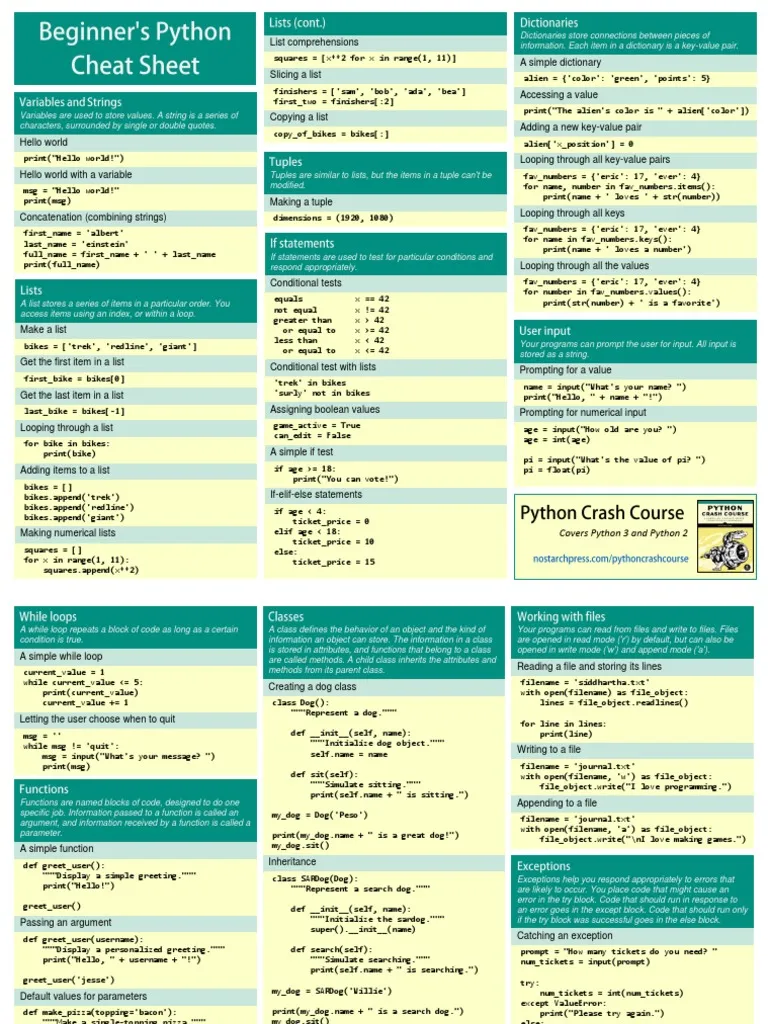
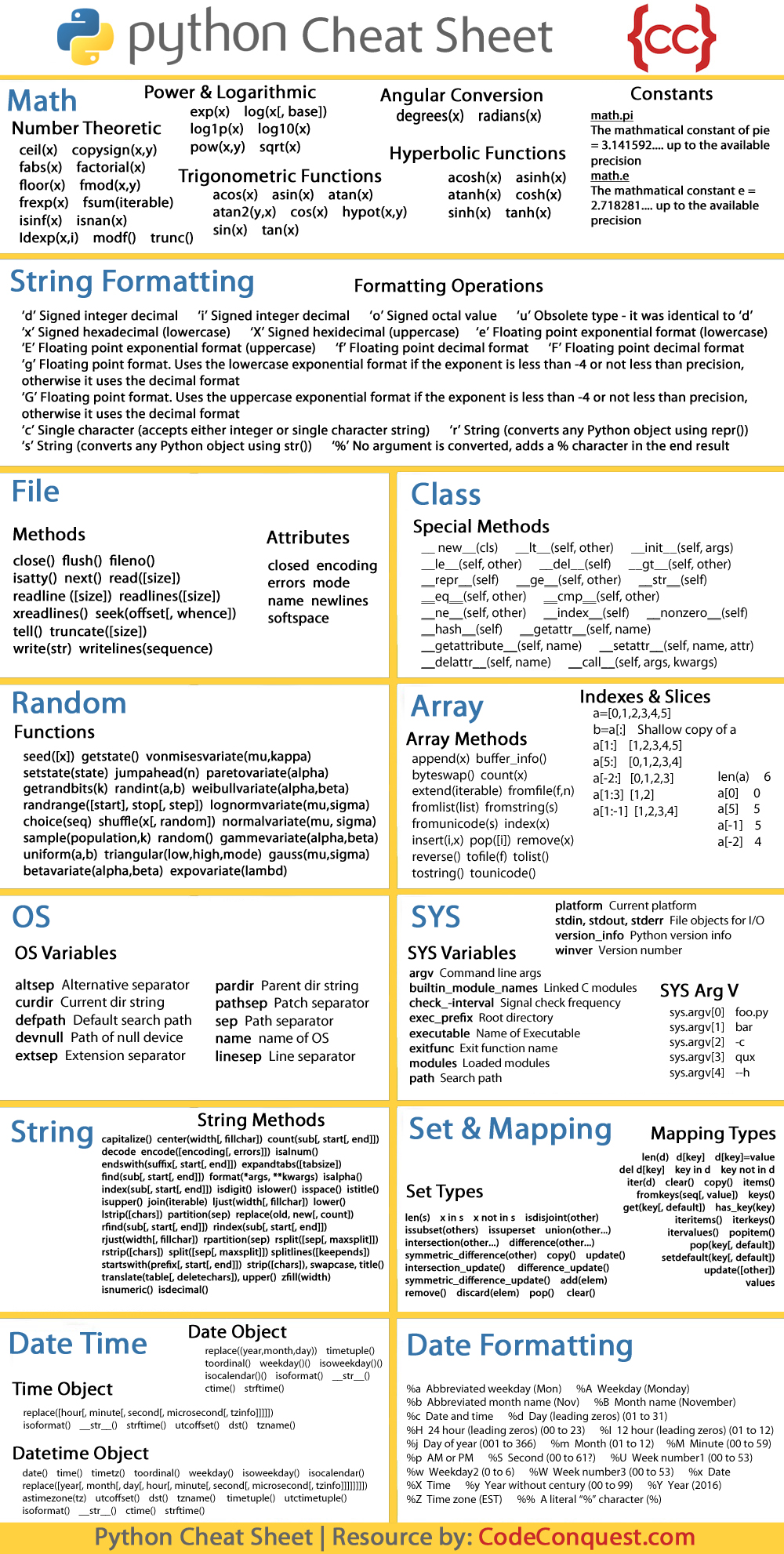
Python Competitive Programming Cheat Sheet
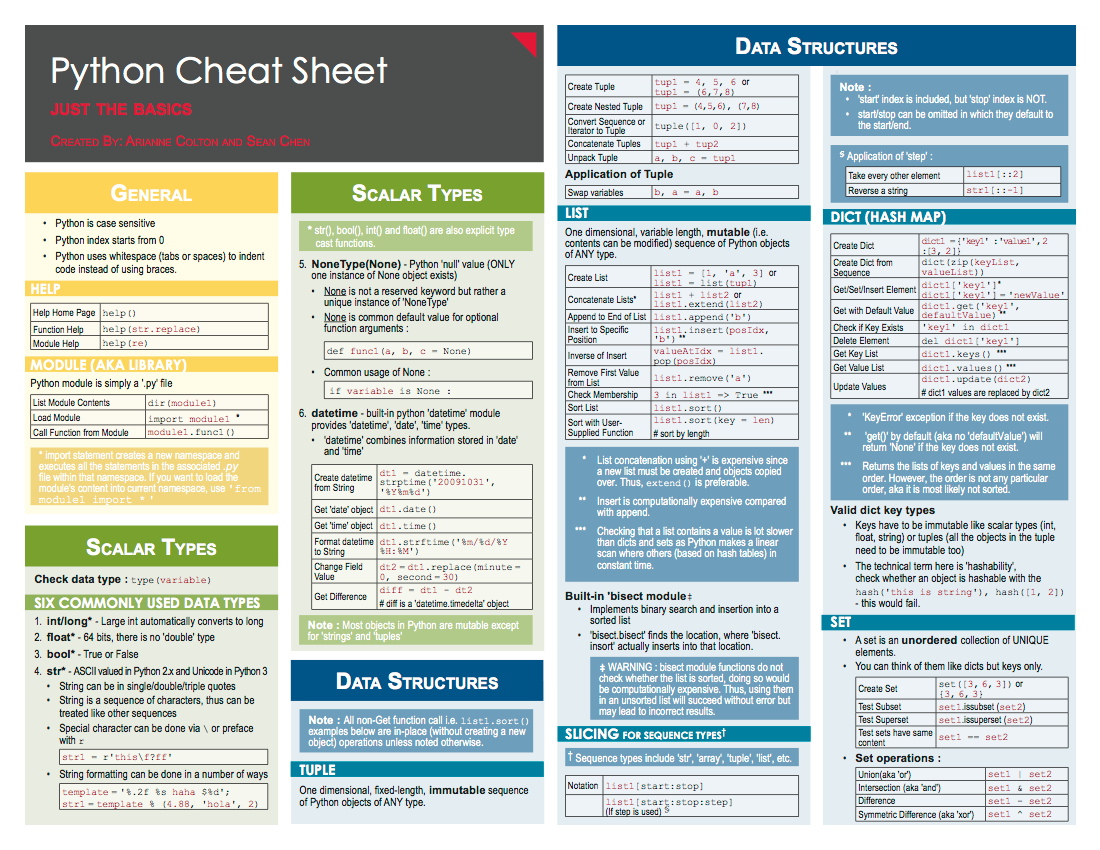
Installing Python is generally easy, and nowadays many Linux and UNIX distributions include a recent Python. Even some Windows computers (notably those from HP) now come with Python already installed. If you do need to install Python and aren’t confident about the task you can find a few notes on the BeginnersGuide/Download wiki page, but installation is unremarkable on most platforms.
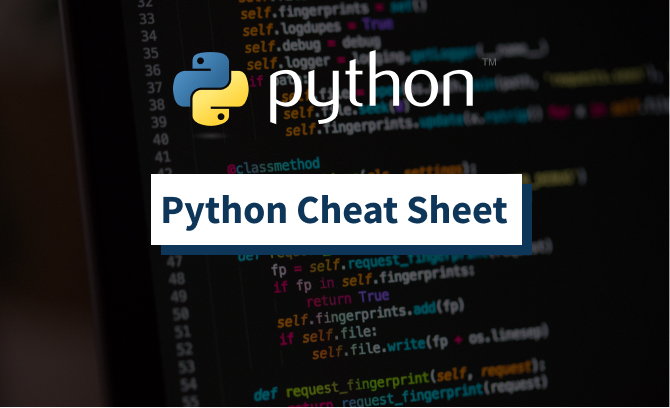
Before getting started, you may want to find out which IDEs and text editors are tailored to make Python editing easy, browse the list of introductory books, or look at code samples that you might find helpful.
There is a list of tutorials suitable for experienced programmers on the BeginnersGuide/Tutorials page. There is also a list of resources in other languages which might be useful if English is not your first language.
The online documentation is your first port of call for definitive information. There is a fairly brief tutorial that gives you basic information about the language and gets you started. You can follow this by looking at the library reference for a full description of Python’s many libraries and the language reference for a complete (though somewhat dry) explanation of Python’s syntax. If you are looking for common Python recipes and patterns, you can browse the ActiveState Python Cookbook
If you want to know whether a particular application, or a library with particular functionality, is available in Python there are a number of possible sources of information. The Python web site provides a Python Package Index (also known as the Cheese Shop, a reference to the Monty Python script of that name). There is also a search page for a number of sources of Python-related information. Failing that, just Google for a phrase including the word ”python” and you may well get the result you need. If all else fails, ask on the python newsgroup and there’s a good chance someone will put you on the right track.
If you have a question, it’s a good idea to try the FAQ, which answers the most commonly asked questions about Python.
Looking to Help?
If you want to help to develop Python, take a look at the developer area for further information. Please note that you don’t have to be an expert programmer to help. The documentation is just as important as the compiler, and still needs plenty of work!
Python Programming Language A Cheat Sheet (free Pdf)
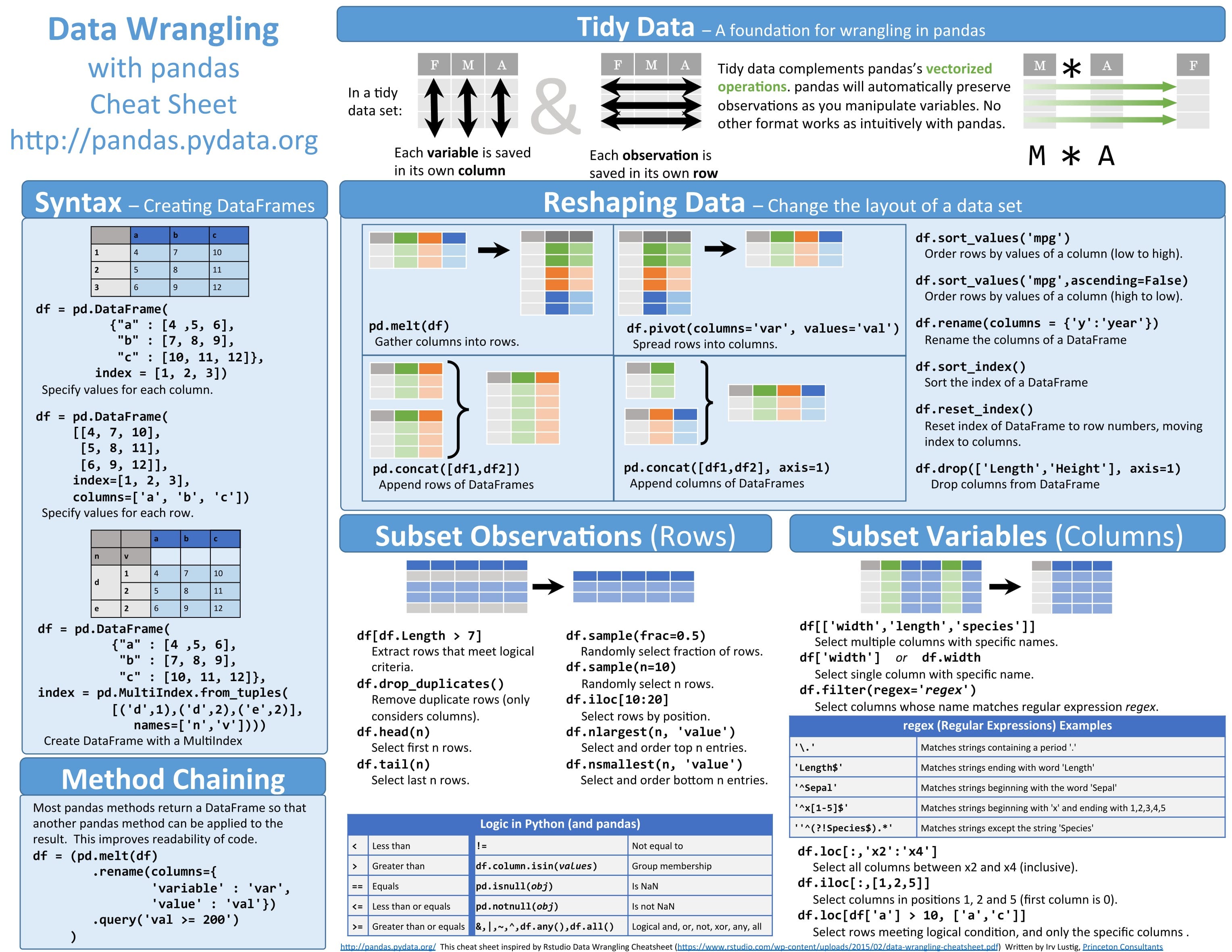
Python Language Cheat Sheet
